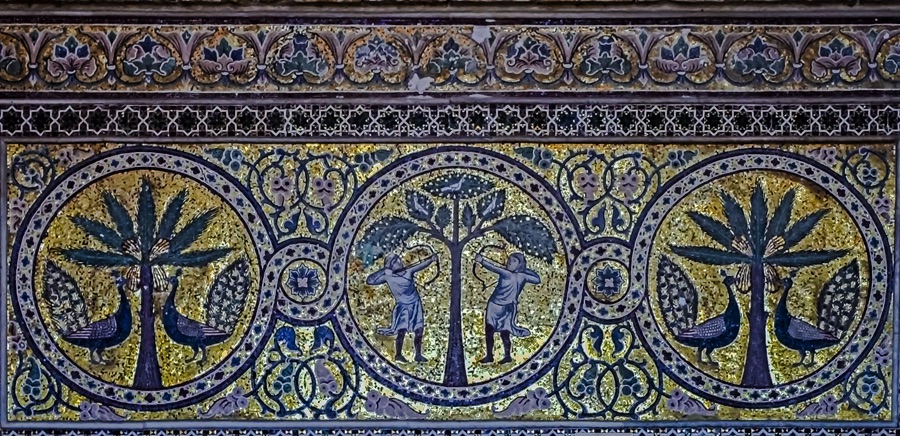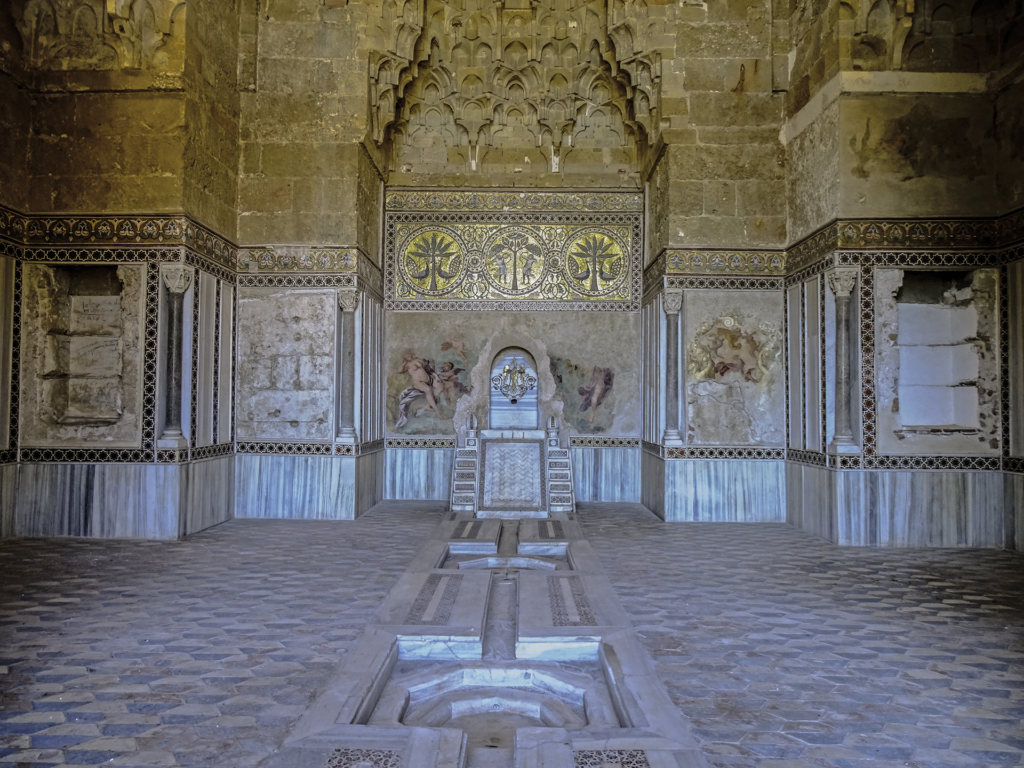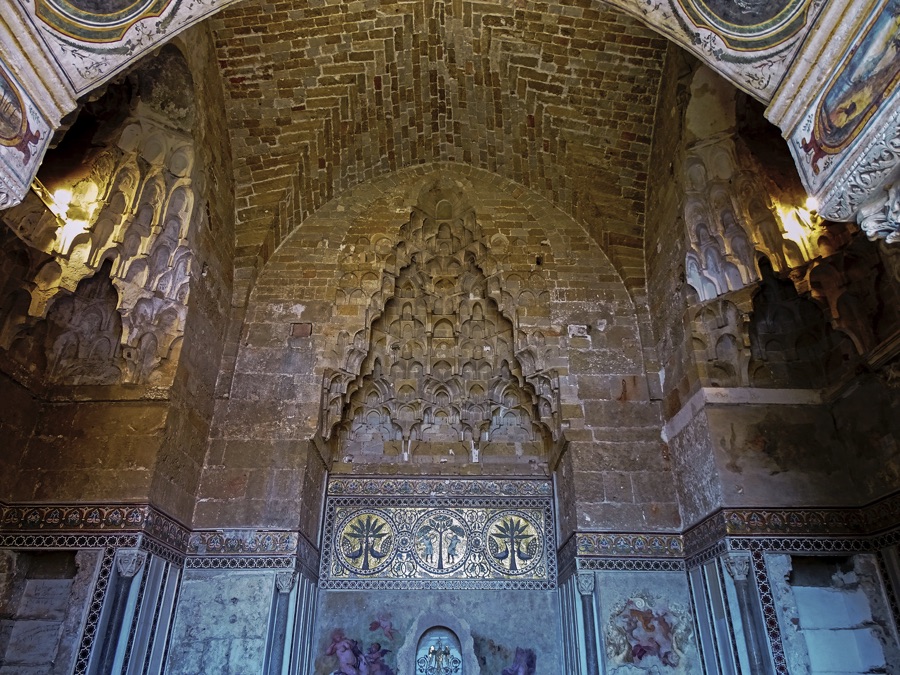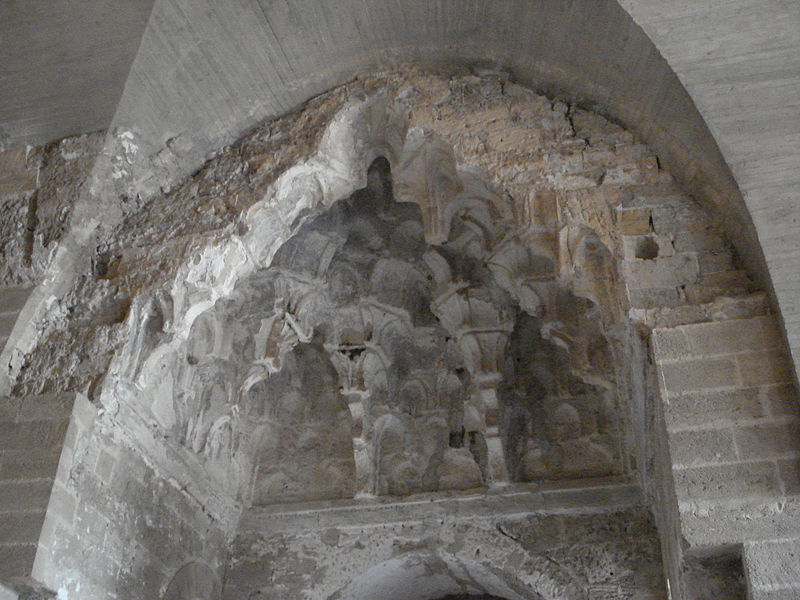The theme of the Garden of Paradise lives on in the decorations of the
mosaic ornaments
,

as well as in the plastic representations of the
capitals
, which adorn the fountain room:
 an Islamic iwan, it is the Norman sovereigns’ reception room and the hub of the entire palace; open and projecting outwards, in an ideal connection with the surrounding park, it is located on axis with the main doorway in a predominant position compared to the other rooms.
an Islamic iwan, it is the Norman sovereigns’ reception room and the hub of the entire palace; open and projecting outwards, in an ideal connection with the surrounding park, it is located on axis with the main doorway in a predominant position compared to the other rooms.
The themes replicate that external reality present in the 12th century, through the depiction of pecking birds and modelled palms in sculptures and archers with birds in mosaic vestments.

The dominant and characteristic motif present in all the rooms is the
muqarnas
, a peculiar expression of Islamic art and a construction system that allows, with a refined stylistic elegance, the connection between the square surface of the rooms and the curved shape of the vaults.
The construction system of the muqarnas consists of
carved tuff
ashlars interlocked according to geometric rules to form the classic alveolus shape. The structure was then covered with stucco, which is still preserved in some parts with remnants of plastering.
